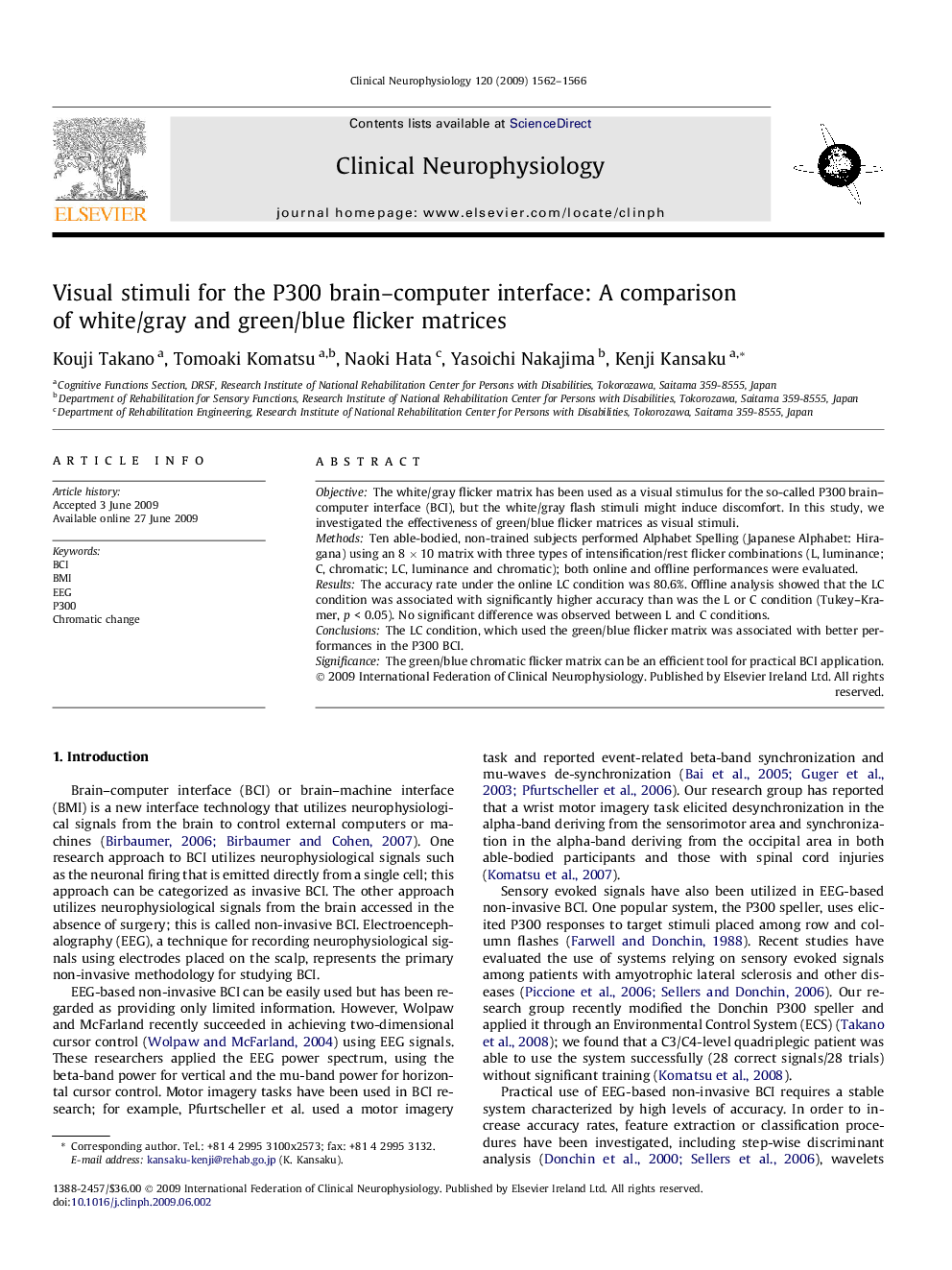| Article ID | Journal | Published Year | Pages | File Type |
|---|---|---|---|---|
| 3046285 | Clinical Neurophysiology | 2009 | 5 Pages |
ObjectiveThe white/gray flicker matrix has been used as a visual stimulus for the so-called P300 brain–computer interface (BCI), but the white/gray flash stimuli might induce discomfort. In this study, we investigated the effectiveness of green/blue flicker matrices as visual stimuli.MethodsTen able-bodied, non-trained subjects performed Alphabet Spelling (Japanese Alphabet: Hiragana) using an 8 × 10 matrix with three types of intensification/rest flicker combinations (L, luminance; C, chromatic; LC, luminance and chromatic); both online and offline performances were evaluated.ResultsThe accuracy rate under the online LC condition was 80.6%. Offline analysis showed that the LC condition was associated with significantly higher accuracy than was the L or C condition (Tukey–Kramer, p < 0.05). No significant difference was observed between L and C conditions.ConclusionsThe LC condition, which used the green/blue flicker matrix was associated with better performances in the P300 BCI.SignificanceThe green/blue chromatic flicker matrix can be an efficient tool for practical BCI application.
